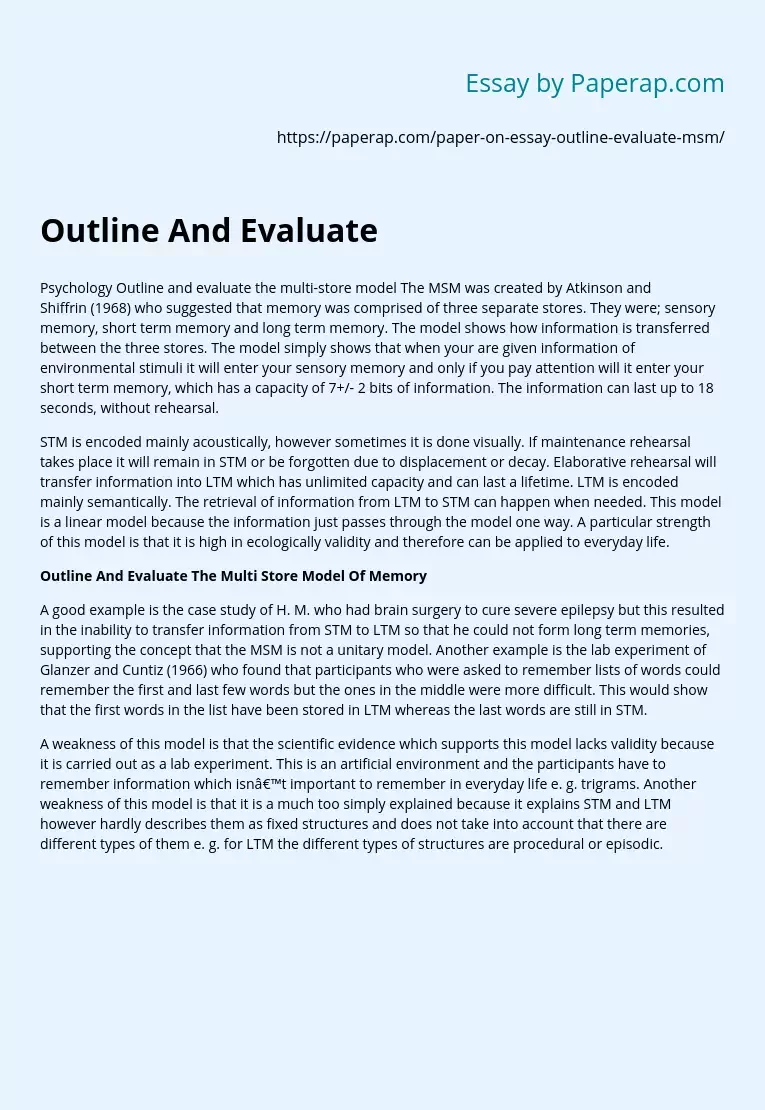Evaluating the Multi-Store Model of Memory
Psychology Outline and evaluate the multi-store model The MSM was created by Atkinson and Shiffrin (1968) who suggested that memory was comprised of three separate stores. They were; sensory memory, short term memory and long term memory. The model shows how information is transferred between the three stores. The model simply shows that when your are given information of environmental stimuli it will enter your sensory memory and only if you pay attention will it enter your short term memory, which has a capacity of 7+/- 2 bits of information.
The information can last up to 18 seconds, without rehearsal.
STM is encoded mainly acoustically, however sometimes it is done visually. If maintenance rehearsal takes place it will remain in STM or be forgotten due to displacement or decay. Elaborative rehearsal will transfer information into LTM which has unlimited capacity and can last a lifetime. LTM is encoded mainly semantically. The retrieval of information from LTM to STM can happen when needed. This model is a linear model because the information just passes through the model one way.
A particular strength of this model is that it is high in ecologically validity and therefore can be applied to everyday life.
Outline And Evaluate The Multi Store Model Of Memory
A good example is the case study of H. M. who had brain surgery to cure severe epilepsy but this resulted in the inability to transfer information from STM to LTM so that he could not form long term memories, supporting the concept that the MSM is not a unitary model.
Another example is the lab experiment of Glanzer and Cuntiz (1966) who found that participants who were asked to remember lists of words could remember the first and last few words but the ones in the middle were more difficult. This would show that the first words in the list have been stored in LTM whereas the last words are still in STM.
A weakness of this model is that the scientific evidence which supports this model lacks validity because it is carried out as a lab experiment. This is an artificial environment and the participants have to remember information which isn’t important to remember in everyday life e. g. trigrams. Another weakness of this model is that it is a much too simply explained because it explains STM and LTM however hardly describes them as fixed structures and does not take into account that there are different types of them e. g. for LTM the different types of structures are procedural or episodic.
Evaluating the Multi-Store Model of Memory. (2019, Dec 05). Retrieved from https://paperap.com/paper-on-essay-outline-evaluate-msm/

